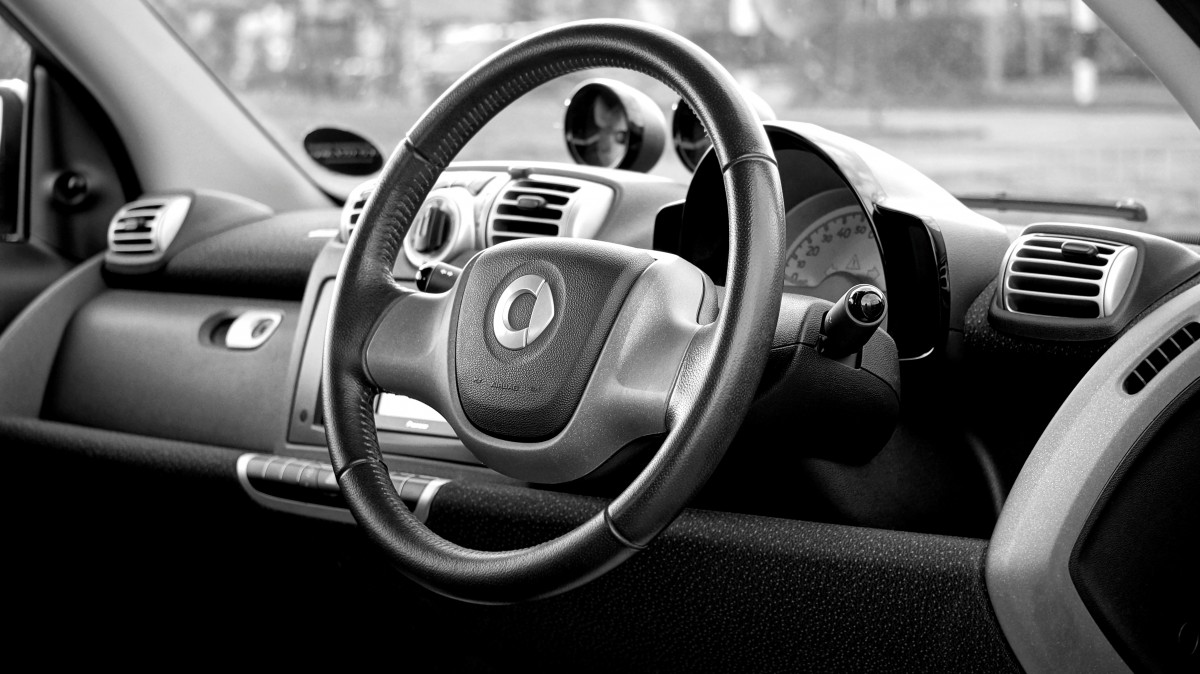Introduction: The Independent Measure of Vehicle Protection
In the critical decision-making process of purchasing a new or used vehicle, no factor is more important than the safety capabilities designed to protect the driver and passengers in the event of a collision. While every modern vehicle must adhere to stringent federal safety standards, the true measure of a car’s protective engineering is provided by two highly influential and entirely independent organizations: the National Highway Traffic Safety Administration (NHTSA) and the Insurance Institute for Highway Safety (IIHS).
These agencies conduct rigorous, often destructive, testing programs that simulate real-world crash scenarios. They provide consumers with objective, comparative data that transcends mere manufacturer marketing claims.
Understanding and correctly interpreting the complex rating systems provided by NHTSA and IIHS is essential for translating laboratory results into practical, actionable purchasing decisions. Their testing methodologies differ significantly: NHTSA focuses primarily on federally mandated crash tests and a simple star-rating system.
Conversely, the IIHS employs a more comprehensive and continually evolving suite of tests, including challenging small overlap front crashes and detailed evaluations of advanced driver-assistance systems (ADAS). Misinterpreting a high rating from one agency while ignoring a poor rating from the other can lead to a false sense of security, exposing the occupants to unnecessary risk in a specific type of collision.
Successfully leveraging these safety metrics requires moving beyond simply looking for “five stars” or a “Top Safety Pick” badge. It demands a granular understanding of which specific crash types—frontal, side, or rollover—are being tested, and how the scores on headlight illumination and front crash prevention systems impact the overall rating.
This comprehensive guide will meticulously dissect the distinct testing methodologies and rating systems of both the NHTSA and the IIHS. We will detail the meaning of each star, grade, and award, and provide a strategic framework for using this crucial information to select the safest possible vehicle for you and your family.
Part I: The National Highway Traffic Safety Administration (NHTSA)

NHTSA is a federal agency within the U.S. Department of Transportation. Its primary role is to enforce federal safety standards and manage the New Car Assessment Program (NCAP), which uses a straightforward star-rating system.
A. The NHTSA 5-Star Rating System
NHTSA’s NCAP evaluates vehicles based on three critical crashworthiness tests, rating each on a scale of one to five stars.
- Frontal Crash Test: This simulates a head-on collision between two similar vehicles traveling at 35 mph. The rating measures the risk of injury to the driver and front passenger based on data collected from crash test dummies, focusing on injury severity to the head, chest, and legs.
- Side Barrier Test: This simulates a perpendicular collision (T-bone crash) by ramming a moving barrier into the side of the stationary test vehicle at 38.5 mph. This assesses the protection offered to the chest and pelvis of the occupants.
- Side Pole Test: This simulates a more severe, glancing side impact where the car slides sideways into a fixed pole at 20 mph. This test provides a rigorous assessment of the side curtain airbags and structural integrity around the occupants’ heads.
B. The Rollover Resistance Test
Rollover resistance is measured separately and is not a destructive crash test.
- Static Stability Factor (SSF): This test measures the geometric properties of the vehicle, assessing its susceptibility to rollover in a single-vehicle loss-of-control scenario. The SSF is primarily based on the ratio of the vehicle’s track width (distance between wheels) to its center of gravity height.
- Electronic Stability Control (ESC): NHTSA requires ESC in all new vehicles and incorporates its effectiveness into the final safety assessment. ESC is a crucial technology for preventing rollovers and skidding by automatically applying individual brakes.
C. Interpreting the NHTSA Star Ratings
The star rating is an aggregated score of the injury risk from the tests.
- Five Stars: Represents the highest level of safety and protection, indicating the lowest risk of injury in a severe crash.
- Three Stars: Represents an average or moderate risk of injury.
- One Star: Represents the lowest level of safety and the highest risk of serious injury.
Part II: The Insurance Institute for Highway Safety (IIHS)

The IIHS is a non-profit organization funded by auto insurers. Its testing methodology is more comprehensive, continually evolving, and uses letter grades and specific awards.
A. The IIHS Crashworthiness Grading System
IIHS uses four grades to rate performance in six distinct crash tests, with “Good” being the highest rating.
- Small Overlap Front Test: This is the most challenging IIHS test, simulating a crash where only a small portion (25%) of the vehicle’s front end hits a rigid barrier at 40 mph. It assesses how well the vehicle’s structure manages impact forces when the main crash structure is bypassed.
- Moderate Overlap Front Test: Simulates a crash where $40\%$ of the vehicle’s front end hits a barrier.
- Side Test: Uses a larger, heavier barrier than the NHTSA test to simulate collision with a larger vehicle, assessing protection for the head, torso, and pelvis.
- Roof Strength Test: Measures the force required to crush the roof by five inches, which is vital for occupant protection in a rollover accident.
- Head Restraints and Seats: Assesses protection against whiplash injury in a rear-end collision.
B. Interpreting the IIHS Grades
The IIHS uses a four-tier system for rating performance in crashworthiness tests.
- Good (G): The highest achievable rating, indicating excellent structural performance and minimal risk of injury.
- Acceptable (A): A solid performance, but with some room for improvement in specific areas of injury mitigation.
- Marginal (M): Suggests structural compromises or injury risks in specific areas.
- Poor (P): The lowest rating, indicating high risk of significant injury in that specific crash type.
C. The Top Safety Pick Awards
The IIHS awards a vehicle the Top Safety Pick or Top Safety Pick+ designation only if it achieves high ratings across both crashworthiness and technology assessments.
- Top Safety Pick: Requires a good or acceptable rating in all six crashworthiness evaluations AND an available advanced or superior rating for front crash prevention technology AND good or acceptable headlights.
- Top Safety Pick+ (Plus): The highest honor, requiring all the criteria for Top Safety Pick, but with the specific requirement of good or acceptable headlights standard across all trim levels (not just available).
Part III: Technology Assessment (The ADAS Scorecard)
Both agencies recognize that crash prevention is as important as crash protection, leading to mandatory testing of Advanced Driver-Assistance Systems (ADAS).
A. Front Crash Prevention (Crucial for Awards)
IIHS rigorously tests the performance of Automatic Emergency Braking (AEB) systems.
- Testing Scenarios: IIHS tests AEB systems in low-speed scenarios ($12$ mph) and high-speed scenarios ($25$ mph) against both vehicle-to-vehicle and vehicle-to-pedestrian situations.
- Superior, Advanced, Basic: Ratings are based on how much the system successfully mitigates speed or avoids the crash. A “Superior” rating requires significant speed mitigation in both high and low-speed tests.
- NHTSA Requirement: NHTSA also tests AEB and Forward Collision Warning (FCW) and uses a simple binary recommendation system.
B. Headlight Evaluation (The IIHS Game-Changer)
Headlight performance is a key differentiator in IIHS ratings, as poor illumination is a major factor in nighttime accidents.
- Illumination Test: IIHS tests the visibility provided by both high beams and low beams, measuring glare and light spread on straight roads and curves.
- Poor Rating Consequence: A vehicle cannot qualify for the Top Safety Pick+ award if any of its available headlight options receive a “Poor” rating, forcing manufacturers to standardize quality lighting.
- Strategic Importance: This test highlights the need for buyers to check the headlight rating for the specific trim level they intend to purchase, as base models often have significantly worse headlights than premium trims.
C. LATCH System Ease of Use
NHTSA assesses the ease of use for the Lower Anchors and Tethers for Children (LATCH) system.
- Child Safety: NHTSA rates the LATCH system’s accessibility in all seating positions. A poor LATCH rating, even on a five-star vehicle, means installing child seats safely is difficult, which is a major concern for families.
Part IV: How to Strategically Use Safety Data
A smart buyer uses the complementary information from both NHTSA and IIHS to gain a complete picture of a vehicle’s safety profile.
A. The Comprehensive Cross-Reference
Never rely solely on one rating system. Use them together for validation.
- Check NHTSA Star Ratings: Use the NHTSA 5-Star system for a quick, federally benchmarked assessment of the vehicle’s overall crash protection capabilities.
- Validate with IIHS Grades: Use the IIHS “Good” grades to confirm excellent structural integrity, especially in the more demanding Small Overlap Front Test. A vehicle that passes the NHTSA test but gets a “Poor” IIHS rating on Small Overlap Front should be treated with extreme caution.
- Technology Check: Confirm that the vehicle has a “Superior” AEB rating from IIHS and that the specific trim level you are buying has “Good” rated headlights (for the TSP+ award).
B. Understanding Test Limitations
No test can perfectly replicate every real-world crash scenario.
- Test Speed: NHTSA and IIHS tests are conducted at specific speeds (e.g., $35$ mph or $40$ mph). Crashes that occur at much higher speeds will naturally result in higher injury risk, regardless of the rating.
- Test Condition: The tests simulate specific, repeatable crashes. Real-world crashes often involve multiple impacts, unusual angles, or non-rigid barriers, making the result unpredictable.
- Focus on Prevention: Recognize that ADAS systems, tested by both agencies, provide the greatest safety benefit by actively preventing the accident from occurring at all.
C. The Financial Benefit
Safety ratings impact more than just the driver’s well-being; they affect long-term costs.
- Insurance Premiums: Vehicles with high safety ratings, standard AEB, and minimal historical claim rates often qualify for lower auto insurance premiums, as insurers view them as lower risk.
- Resale Value: Top safety ratings are a powerful marketing tool. Vehicles designated as Top Safety Pick+ often retain a higher resale value, maximizing the owner’s return on investment.
Conclusion: Informed Decisions for Maximum Protection
Successfully decoding the safety ratings from NHTSA and IIHS is the foundational step in securing the maximum possible vehicle protection. The NHTSA’s 5-Star rating provides a broad, federally mandated benchmark of crashworthiness, while the IIHS offers a more granular, continually evolving assessment, including rigorous small overlap front tests and essential evaluations of Advanced Driver-Assistance Systems (ADAS).
A financially savvy buyer must use these two systems as complementary data sources, confirming high structural integrity (IIHS “Good” grades) with overall protection scores (NHTSA stars) before purchase. Crucially, the presence of a “Superior” front crash prevention system is the single most important factor for maximizing safety and potentially lowering insurance premiums.
By prioritizing the Top Safety Pick+ award and understanding the specific requirements for crash prevention and headlight performance, consumers ensure their vehicle acquisition is driven by objective data. This informed vigilance secures not only the physical safety of the occupants but also provides long-term financial benefits through lower insurance costs and higher resale values.













